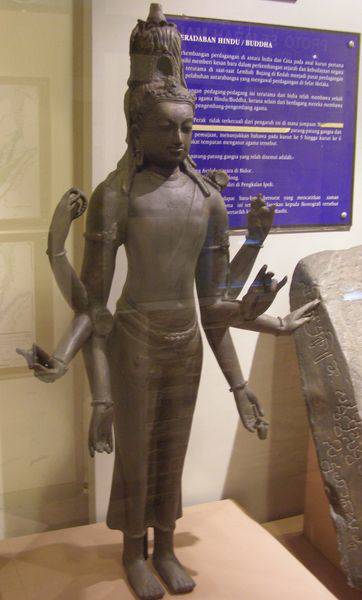Buddhism In Malaysia
28 Oct
 Back in school, I learned during history class that Hindu-Buddhist beliefs were once widespread throughout the Malay archipelago (that includes modern-day Malaysia). The Indian traders and merchants brought over their beliefs, culture and religion as they were blown over by the Indian Sea winds.
Back in school, I learned during history class that Hindu-Buddhist beliefs were once widespread throughout the Malay archipelago (that includes modern-day Malaysia). The Indian traders and merchants brought over their beliefs, culture and religion as they were blown over by the Indian Sea winds.
All that changed when the king of Chola from India attacked the Malay kingdom of Kedah in the 11 century. Subsequently, Phra Ong Mahawangsa (who was originally Hindu) became the first Malay ruler to denounce all traditional Indian religions and converted to Islam. During the golden age of Malacca Sultanate, majority of the Malays converted to Islam. Any survivors of the pre-Islamic-Malay royalty moved to what is now Bali.
Hence today, Malays are Muslim by default and fortunately, the other races like the Chinese, Indian and other minorities enjoy the freedom of worship. However, modern Buddhism in Malaysia consists of mainly the Theravadan school of Buddhism. This is due to proximity with Thailand and the missionary efforts of the monks of that tradition within the Chinese community. The Chinese were immigrants themselves and they brought a loose folk mixture of Taoist and Buddhist Mahayana beliefs but no real adherence to either.
Therefore, orthodox Mahayana tradition is a relative newcomer while the Vajrayana or the Tibetan tradition is an even more recent phenomenon. I don’t have dates for their arrival into Malaysia but most Tibetan Buddhist centers would not be older than 20 years. Hence, many of these centers are relatively small and underdeveloped.
There is a lot of room for growth but I think a major stumbling block would be from the practitioners themselves. Malaysian monks are few and far in between and rumours of lay students removing and replacing their teachers (who are monks) at whim makes ‘real’ spread of Buddhism seemed daunting. I guess, these challenges would have been familiar to the Tibetan translators and Indian teachers who brought Buddhism to Tibet.
Fortunately, teachers like H. E. Tsem Tulku Rinpoche who came to Malaysia as early as 1992, have realised the situation here and have over the years adapted his teachings and organisation to the local people. Hence, he feels that local lay Buddhist teachers are needed for Buddhism to really expand and grow. Hence, his grand vision of Kechara World Peace Center is to develop local lay teachers and practitioners along with other purposes. This institution will be vital for the development of Buddhism here in Malaysia.
(PS: The picture shows the statue of Avalokiteshvara Amoghapasha (8-armed Chenrezig/Kuan Yin) found in a Perak tin mine and is now an exhibit in the National Museum. The style dates back to around the 8th-9th century which is during the period of the Malay kingdom of Gangga Negara.)





No comments yet